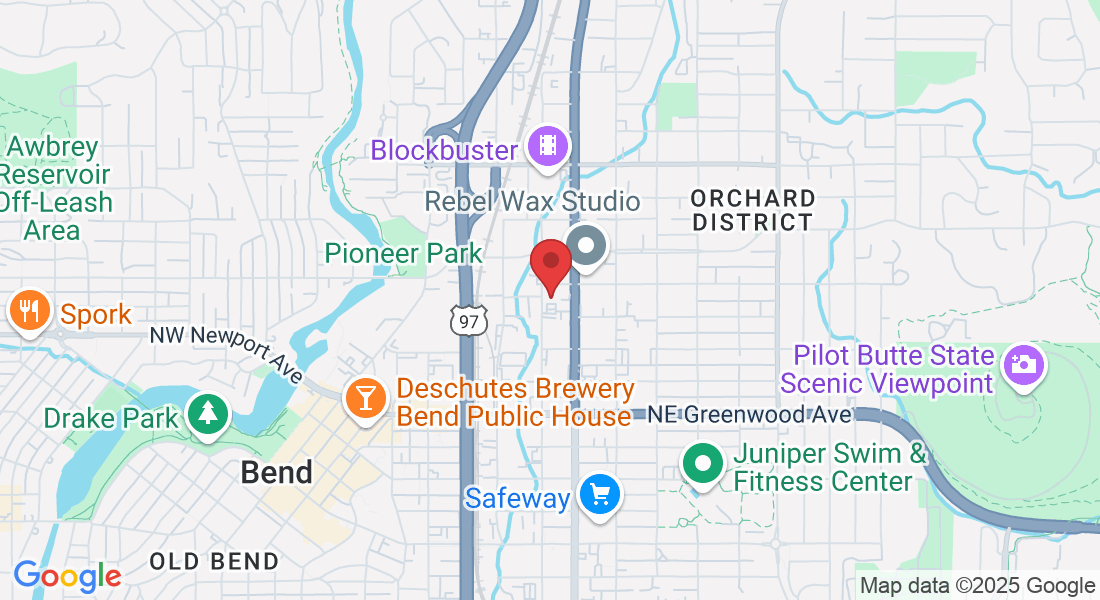TMJ Relief
Unlock Relief From TMJ Pain
If you're struggling with discomfort and dysfunction in your jaw, you've come to the right place. Temporomandibular joint (TMJ) disorders, or TMD, as they are also known, can severely impact the quality of your life, leading to significant jaw pain, headaches, and hindrances in performing simple tasks like opening and closing your mouth. By diving deeper into understanding the complexities of TMJ disorders, we're equipped to provide innovative and tailored physical therapy solutions for effective TMJ pain relief.
Experience TMJ Relief like Never Before with PhysioFit: We take a deeply personalized approach to your health, comprehending that every TMJ pain sufferer requires a unique treatment plan. Leveraging the power of evidence-based, fitness-driven physical therapy in bend, we strive to offer more than temporary relief. We aspire to improve your overall well-being, stave off persistent pain and accelorate your recovery process, allowing you to effortlessly resume your normal life.
What You Should Know
Healthcare providers classify TMDs into three categories:
Disorders of Your Jaw Joints: These involve complications in the jaw joints themselves, often manifesting as clicking, popping, or grating sounds during jaw movement.
Disorders of Your Chewing Muscles: This category includes issues related to the muscles responsible for chewing, where patients may experience persistent or intermittent muscle pain.
Headaches That Result From TMD: A significant fraction of TMD sufferers may experience headaches or migraines as a consequence of jaw joint or muscle dysfunction, significantly affecting their quality of life.
A proper diagnosis of a TMJ or TMD problem involves a thorough evaluation from a professional.

Some of The Most Common Causes of TMJ Pain
The onset of TMD isn't attributed to one solitary cause. Instead, it tends to emerge from a diverse array of factors, often in combination.
Jaw injury: Injuries such as a broken or dislocated jaw can directly affect the temporomandibular joint, leading to TMJ disorders. Such physical trauma can disrupt the alignment and smooth functioning of the jaw joint, inducing pain and discomfort.
Teeth Grinding or Clenching (bruxism): Frequent teeth grinding or clenching, often a subconscious habit during sleep or periods of stress, can exert excessive pressure on the TMJ, contributing to its dysfunction. Over time, this can lead to wear and tear, causing persistent pain and other TMJ-related symptoms.
Arthritis in Your Jaw Joint: Arthritis, an inflammatory condition, can affect any joint in your body, including the TMJ. The inflammation and degeneration associated with arthritis can cause joint pain and stiffness, impairing normal jaw movement.
Malocclusion: Malocclusion refers to the misalignment of teeth when the jaws are closed, which can put additional strain on the TMJ. This imbalance can force the jaw joint to work harder to achieve efficient biting and chewing, increasing the risk of TMJ disorders.
Stress: High levels of stress can lead to physical manifestations such as increased muscle tension or clenching of teeth, both of which can place undue strain on the TMJ. Chronic stress can exacerbate these physical responses, thereby contributing to TMJ pain and dysfunction over time.
If any of this information resonates with your current situation, we urge you to schedule an appointment with us immediately. Don't let hip pain diminish your life quality - allow us to help you embark on the path to relief today.
Can I Prevent TMD or TMJ Pain?
While it's true that certain risk factors contributing to TMJ dysfunction are beyond our control, there are still practical steps you can take to minimize the likelihood of developing this condition:
Make Use of a Mouth Guard During Sleep: Nighttime teeth clenching or grinding, known as bruxism, can significantly contribute to TMJ dysfunction. By wearing a mouth guard as you sleep, you can effectively mitigate this risk, protecting your jaw joints from undue pressure.
Ensure You're Protected in High-Risk Situations: When participating in contact sports, your facial area is more susceptible to injuries. Utilizing a mouth guard during such activities can offer invaluable protection for your jaw, reducing the risk of TMD.
Prioritize Maintaining Good Posture: The alignment of your neck and head plays a vital role in the functioning of your jaw. By ensuring good posture, you can maintain optimal alignment, thereby reducing strain on your TMJ.
Embrace Stress Reduction Practices: Stress can lead to unconscious habits such as jaw clenching, which can exacerbate or lead to TMD. Techniques such as meditation or mindfulness exercises can help manage your stress levels, offering indirect yet essential protection against TMJ dysfunction.

Common Symptoms of TMJ Pain
Jaw Tightening or Stiffness
Jaw Pain
Jaw Clicking or Popping
Trouble Closing or Opening Your Mouth.
Headaches or Migraines
Earaches or Toothaches
Ringing in Your Ears (tinnitus)
Teeth Fitting Together Differently (malocclusion)
Remember, if you resonate with any of the symptoms or conditions mentioned, we highly recommend making an appointment with us for a thorough evaluation and personalized treatment plan.
Please Note: The information provided on our website is intended for general education and is not a substitute for professional medical advice. Each individual's situation and body is different. Therefore, what may work for one person may not work for another. We care about your well-being and advise you to reach out to us to discuss your specific needs before implementing any advice from our website.
Your Source for All Things Physical Therapy in Bend Oregon
The PhysioBlog

Avoid the "Always In Season" Training Mistake | PhysioFIT Bend Oregon
Whether you’re chasing PRs, hiking Pilot Butte every weekend, or grinding it out at the gym between work and family, here’s a hard truth most active adults in Bend, Oregon don’t want to hear:
You might be training like you’re always in season… and that’s a problem.
At PhysioFIT at The Performance Collective, we work with athletes of all kinds—from mountain bikers and CrossFitters to weekend warriors and backcountry skiers. And one of the most common mistakes we see? People treating their bodies like they're always on. Always pushing. Never pausing. Never rebuilding.
The Athlete's Secret: Training in Phases
Professional athletes don’t train the same way year-round. Their entire performance strategy is built around periodization—structured phases of stress, recovery, adaptation, and peak performance. That cycle revolves around two core phases:
1. In-Season Phase: Maintain + Compete
This is where most of us think we should live. The “go-time” mode. The sexy part. The performance stage.
But in-season training is not about growth—it’s about preservation. It’s about doing just enough to maintain your edge, avoid injury, and stay sharp during competition or peak activity windows.
Here’s what smart in-season training looks like:
Prioritizing recovery over volume
Avoiding spikes in load or intensity
Monitoring for fatigue and overuse warning signs
Maintaining mobility and joint health through prehab routines
Staying consistent but conservative with strength training
Think of it as treading water at a high level—not sinking, not surging.
2. Off-Season Phase: Rebuild + Reset
Now here’s where the magic happens—and it’s where most active adults fall short.
The off-season is not about getting soft. It’s about getting smart.
You’re not backing off because you’re weak. You’re backing off to build back stronger. This is your chance to:
✅ Heal micro-tears in muscle and connective tissue
✅ Address mobility restrictions and movement inefficiencies
✅ Rebalance strength across joints and muscle groups
✅ Develop better mechanics and foundational endurance
✅ Focus on the little things that make a big difference when you’re back in go-mode
Skipping this phase is like skipping leg day for your whole body. Eventually, the imbalance will catch up with you—usually in the form of nagging pain, poor performance, or injury.
Why Always Being “In-Season” Wears You Down
Here’s what we see at PhysioFIT all the time:
🚫 Low-grade fatigue that just won’t go away
🚫 Flat workouts even with plenty of sleep and nutrition
🚫 Nagging tendon pain in the knees, shoulders, or elbows
🚫 Back tightness or joint pain that creeps up after every session
🚫 A growing pile of PT sessions, chiro visits, and massage appointments that treat symptoms but not the root cause
The root cause? You never gave your body time to adapt.
Active Adults Need Off-Seasons More Than Pros
Here’s the kicker: If you’re not a professional athlete, you might need an off-season even more.
Why? Because you’re juggling stressors athletes don’t have to deal with:
Long work hours
Parenting
Poor sleep
Travel
Deadlines
Mental fatigue
All of these increase your overall load—even before you step into the gym. That’s why many of our Bend clients at PhysioFIT perform better once they adopt a smarter, season-based approach to their training.
How to Build Your Own Training Seasons (Without a Coach)
Even if you’re not prepping for the Olympics, you can use the same principles:
✅ Step 1: Pick Your “Competition Season”
Choose 1–2 times per year where you’ll push hard—races, ski trips, backpacking adventures, etc.
✅ Step 2: Plan a Structured Off-Season
2–3 months of reduced load, increased mobility work, and strength training to fix weak links.
✅ Step 3: Layer in a Pre-Season Phase
4–8 weeks before go-time, ramp up intensity and sport-specific training.
✅ Step 4: Check in with a Physio
Get assessed. Address compensations. Test your strength and mobility objectively. (We use force plates, dynamometers, and advanced movement screens at PhysioFIT.)
Conclusion
You can’t just keep hammering and expect to level up.
Recovery is the gateway to performance.
By learning to respect both the in-season and off-season phases, you’ll unlock:
✅ More gains
✅ Fewer injuries
✅ Better energy
✅ Longer athletic longevity
✅ More fun doing what you love
And that’s what we’re all about at PhysioFIT.
Ready to Reset?
If you’re stuck in permanent “go” mode and your body’s giving you warning signs, it’s time for a smarter approach. At PhysioFIT at The Performance Collective in Bend, Oregon, we help active adults and recreational athletes build personalized performance plans that respect the cycle—and get results.
Schedule a recovery & performance assessment with one of our sports therapy specialists today.
Sources:
Copyright PhysioFIT 2025 . All rights reserved


